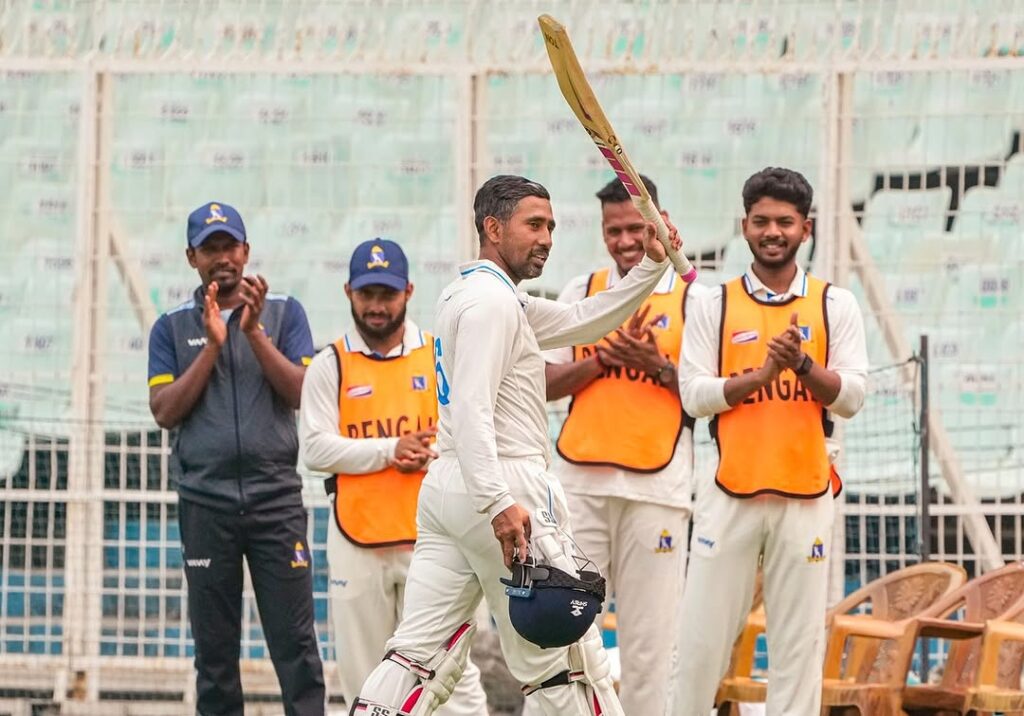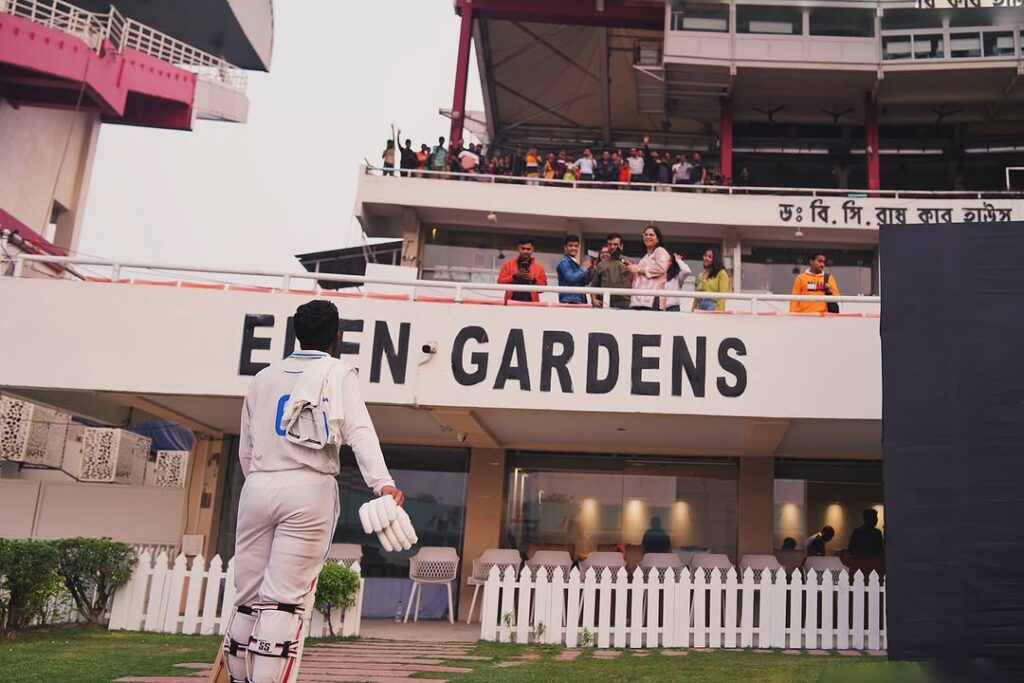
Wriddhiman Saha would have been proud of the catch the Punjab wicket-keeper held to send him back for a six-ball duck in what turned out to be the Bengal veteran’s last first-class knock. As his team posted an innings win, a 17-year-career, which started with a century on Ranji Trophy debut at Eden Gardens, ended with a zero in the same competition, and at the same venue.
There is something about scoring a duck in the last outing when it comes to the stalwarts from Bengal. Pankaj Roy (first-class), Sourav Ganguly (Test cricket) and Jhulan Goswami (women’s ODI) had failed to trouble the scorers in their last innings. Although Saha joins an elite club nobody would seek membership of, he will be remembered for better reasons.
A self-made cricketer from Siliguri in northern Bengal, who found it tough to make ends meet in his early days in Kolkata and shared a rundown, tiny accommodation in the city with fellow strugglers, Saha went on to become the best wicketkeeper of his generation. To see through the MS Dhoni era and end up with 40 Test caps was no mean achievement. Had he been better with the bat away from home, that tally would have been bigger.
Well before his first-class debut, the then Bengal players used to say that here’s a “good cricketer”. He had to wait to break into the Ranji side until Deep Dasgupta joined the now defunct Indian Cricket League. In his first match against Hyderabad in November 2007, Saha cracked a hundred and flew high and wide to his left to snare a top edge off the bat of VVS Laxman, who tried to hook Shib Sankar Paul.
Years later, Laxman would recall how impressive Saha was on the tour of Australia in 2011-12, where India got routed 4-0. Saha played the last Test when Dhoni was suspended due to slow ove- rates and he made a 94-ball 35, which helped Virat Kohli get to his maiden Test century. Laxman said later that when Saha was not in the XI, he would head for the practice nets during the matches and spend hours over there with someone from the support staff to hone his keeping skills.
Wriddhiman Saha plays his farewell game for Bengal against Punjab in the Ranji Trophy fixtureIn many ways, Saha was the embodiment of the saying ‘practice makes perfect’. This was visible from the sessions of the Bengal team as well. Never indulging in small talks or showing signs of drop in intensity, he would keep pushing himself, even when the rest of the players were done for the day. It seemed from a distance that he was obsessed with practice and fitness drills. Not without reason did he manage to keep himself fit when in the wrong side of the thirties.
There were question marks about his ability with the bat in SENA countries. Out there, he never looked like the batter who could dominate attacks. Saha might be ruing even now a suicidal shot to get out off Nathan Lyon in the 2014-15 Test in Adelaide, where Kohli was leading a stunning Indian charge towards victory in the fourth innings. That wicket lost India the match.
Still, his Test average of 29.41 with three centuries and six fifties is not negligible. He scored a century in the company of Cheteshwar Pujara in Ranchi in 2016-17 to keep India in the series against Australia. Just before his last Test, he made an unbeaten 61 in the second innings to help the team wriggle out of a spot of bother against New Zealand in Kanpur. In the 2016-17 Irani Cup, he made a double century in an unbroken, fifth-wicket stand of 316 with Pujara in a winning cause.
A compilation of Saha catches was doing the rounds on social media a few days ago. It’s a must-watch because of the agility, anticipation, reflexes, composure, timing and ball sense on display. Great wicketkeepers make the area up to first slip their own. Saha ruled that region. He was equally sharp against Ravichandran Ashwin, whose variations he found challenging.
Ironically, Saha’s first-class career ended because of a piece of work as brilliant as he was capable of. Punjab wicketkeeper Anmol Malhotra almost crossed first slip while pouching that ball air-borne, body parallel to the ground. A flying farewell for a 40-year-old, who delighted millions with his acrobatics behind the stumps.
Also Read: India not to blame for match referee using his discretion on concussion sub




